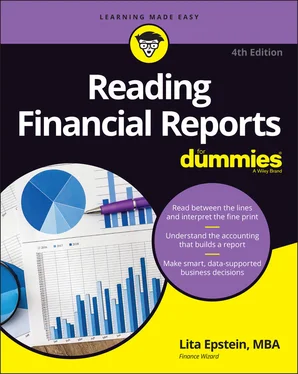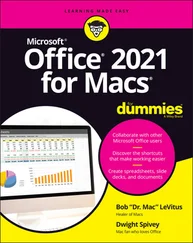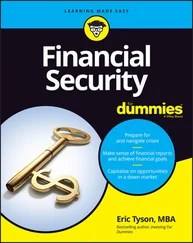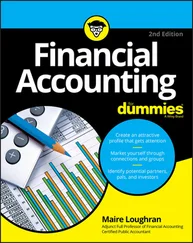Lita Epstein - Reading Financial Reports For Dummies
Здесь есть возможность читать онлайн «Lita Epstein - Reading Financial Reports For Dummies» — ознакомительный отрывок электронной книги совершенно бесплатно, а после прочтения отрывка купить полную версию. В некоторых случаях можно слушать аудио, скачать через торрент в формате fb2 и присутствует краткое содержание. Жанр: unrecognised, на английском языке. Описание произведения, (предисловие) а так же отзывы посетителей доступны на портале библиотеки ЛибКат.
- Название:Reading Financial Reports For Dummies
- Автор:
- Жанр:
- Год:неизвестен
- ISBN:нет данных
- Рейтинг книги:5 / 5. Голосов: 1
-
Избранное:Добавить в избранное
- Отзывы:
-
Ваша оценка:
- 100
- 1
- 2
- 3
- 4
- 5
Reading Financial Reports For Dummies: краткое содержание, описание и аннотация
Предлагаем к чтению аннотацию, описание, краткое содержание или предисловие (зависит от того, что написал сам автор книги «Reading Financial Reports For Dummies»). Если вы не нашли необходимую информацию о книге — напишите в комментариях, мы постараемся отыскать её.
Reading Financial Reports For Dummies,
Reading Financial Reports For Dummies
Reading Financial Reports For Dummies — читать онлайн ознакомительный отрывок
Ниже представлен текст книги, разбитый по страницам. Система сохранения места последней прочитанной страницы, позволяет с удобством читать онлайн бесплатно книгу «Reading Financial Reports For Dummies», без необходимости каждый раз заново искать на чём Вы остановились. Поставьте закладку, и сможете в любой момент перейти на страницу, на которой закончили чтение.
Интервал:
Закладка:
Almost since the day it was passed, moves have been made to weaken Dodd-Frank. The Trump administration started to tear down the law in 2018. Here is the damage that was done:
Bank regulation was watered down and the rules intended to protect big banks from collapse were changed. Fewer banks are now required to go through stress tests to be sure they can handle a severe downturn.
The CFPB’s role was weakened in its efforts to investigate subprime lenders. Originally, Congress made the director independent and they were only allowed to be removed for wrongdoing. The Trump administration fought a long battle all the way up to the Supreme Court, which ruled that the director can be fired at will by the president, which makes the director beholden to the political whims of a sitting president.
The Volcker Rule was loosened so that bank capital requirements are lower and banks can be granted permission to make investments in venture-capital funds, possibly setting the banks on the road to another financial crisis.
Entering a Whole New World: How a Company Goes from Private to Public
So the owners of a company have finally decided to sell the company's stock publicly. Now what? In this section, I describe the role of an investment banker in helping a company sell its stock. I also explain the process of making a public offering.
Teaming up with an investment banker
The first step after a company decides to go public is to choose who will handle the sales and which market to sell the stock on. Few firms have the capacity to approach the public stock markets on their own. Instead, they hire an investment banker to help them through the complicated process of going public. A well-known investment banker can lend credibility to a little-known small company, which makes selling the stock easier.
Investment bankers help a company in the following ways:
They prepare the required SEC documents and register the new stock offering with the SEC. These documents must include information about the company (its products, services, and markets) and its officers and directors. Additionally, they must include information about the risks the firm faces, how the business plans to use the money raised, any outstanding legal problems, holdings of company insiders, and, of course, audited financial statements.
They price the stock so it's attractive to potential investors. If the stock is priced too high, the offering could fall flat on its face, with few shares sold. If the stock is priced too low, the company could miss out on potential cash that investors, who buy IPO shares, can get as a windfall from quickly turning around and selling the stock at a profit.
They negotiate the price at which the stock is offered to the general public and the guarantees they give to the company owners for selling the stock. An investment banker can give an underwriting guarantee, which guarantees the amount of money that will be raised. In this scenario, the banker buys the stock from the company and then resells it to the public. Usually, an investment banker puts together a syndicate of investment bankers who help find buyers for the stock.Another method that's sometimes used is called a best efforts agreement. In this scenario, the investment banker tries to sell the stock but doesn't guarantee the number of shares that will sell.
They decide which stock exchange to list the stock on. The New York Stock Exchange (NYSE) has the highest level of requirements. If a company wants to list on this exchange, it must have a pretax income of at least $10 million over the last three years and 2,200 or more shareholders. The NASDAQ has lower requirements. Companies can also sell stock over the counter, which means the stock isn't listed on any exchange, so selling the stock both as an IPO and after the IPO is much harder.
Making a public offering
After the company and the investment banker agree to work together and set the terms for the public offering, as well as the commission structure (how the investment banker gets paid), the banker prepares the registration statement to be filed with the SEC.
After the registration is filed, the SEC imposes a “cooling-off period” to give itself time to investigate the offering and to make sure the documents disclose all necessary information. The length of the cooling-off period depends on how complete the documents are and whether the SEC asks for additional information. During the cooling-off period, the underwriter produces the red herring, which is an initial prospectus that includes the information in the SEC registration without the stock price or effective date.
After the underwriter completes the red herring, the company and the investment bankers do road shows — presentations held around the country to introduce the business to major institutional investors and to start building interest in the pending IPO. A company can't transact sales until the SEC approves the registration information, but it can start generating excitement and getting feedback about the IPO at these meetings.
When the SEC finishes its investigation and approves the offering, the company can set an effective date, or the date of the stock offering. The company and investment bankers then sit down and establish a final stock price. Although they discuss the stock price in initial conversations, they can't set the final price until they know the actual effective date. Market conditions can change significantly from the time the company first talks with investment bankers and the date when the stock is finally offered publicly. Sometimes the company and investment banker decide to withdraw or delay an IPO if a market crisis creates a bad climate for introducing a new stock or if the road shows don't identify enough interested major investors.
After the stock price is set, the stock is sold to the public. The company gets the proceeds minus any commissions it pays to the investment bankers.
Chapter 4
Digging into Accounting Basics
IN THIS CHAPTER
 Understanding the two main accounting methods
Understanding the two main accounting methods
 Deciphering debits and credits
Deciphering debits and credits
 Examining the Chart of Accounts
Examining the Chart of Accounts
 Looking at the different types of profit
Looking at the different types of profit
Ah, the language of financial accounting — debits, credits, double-entry accounting! Just reading the words makes your heart beat faster, doesn't it? The language and practices of accountants can get the best of anyone, but there's a method to the madness. Figuring out that method is a crucial first step to understanding financial reports.
In this chapter, I help you understand the logic behind the baffling and unique world of financial accounting. And you don't even need a pocket protector!
Making Sense of Accounting Methods
Officially, two types of accounting methods dictate how a company records its transactions in its financial books: cash-basis accounting and accrual accounting. The key difference between the two types is how the company records cash coming into and going out of the business.
Within that simple difference lies a lot of room for error — or manipulation. In fact, many of the major corporations involved in financial scandals have gotten into trouble because they played games with the nuts and bolts of their accounting method. I talk more about those games in Chapter 23.
Читать дальшеИнтервал:
Закладка:
Похожие книги на «Reading Financial Reports For Dummies»
Представляем Вашему вниманию похожие книги на «Reading Financial Reports For Dummies» списком для выбора. Мы отобрали схожую по названию и смыслу литературу в надежде предоставить читателям больше вариантов отыскать новые, интересные, ещё непрочитанные произведения.
Обсуждение, отзывы о книге «Reading Financial Reports For Dummies» и просто собственные мнения читателей. Оставьте ваши комментарии, напишите, что Вы думаете о произведении, его смысле или главных героях. Укажите что конкретно понравилось, а что нет, и почему Вы так считаете.












